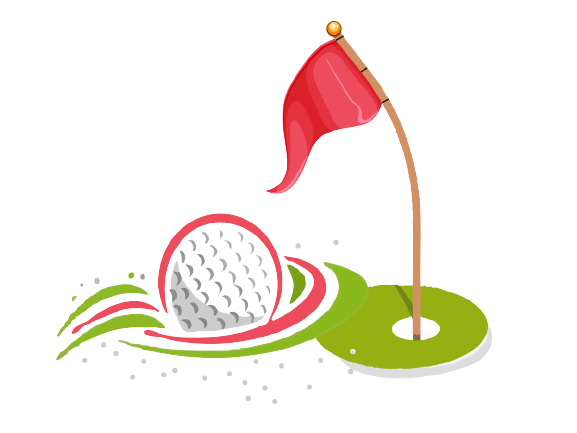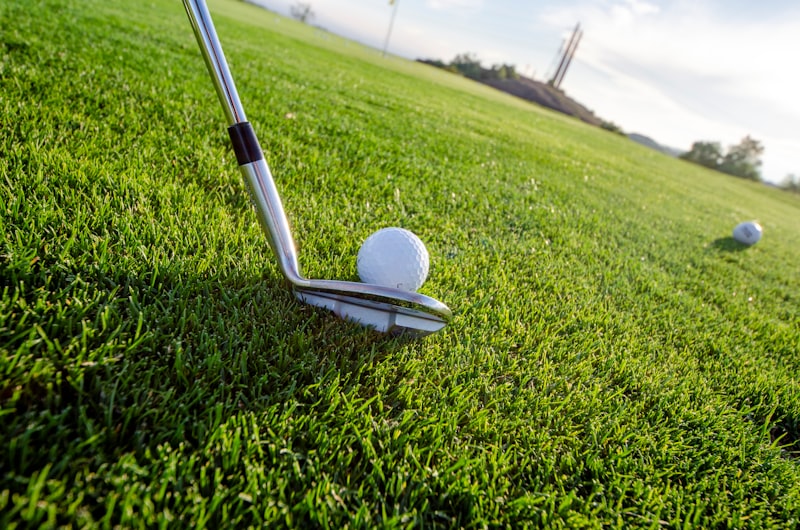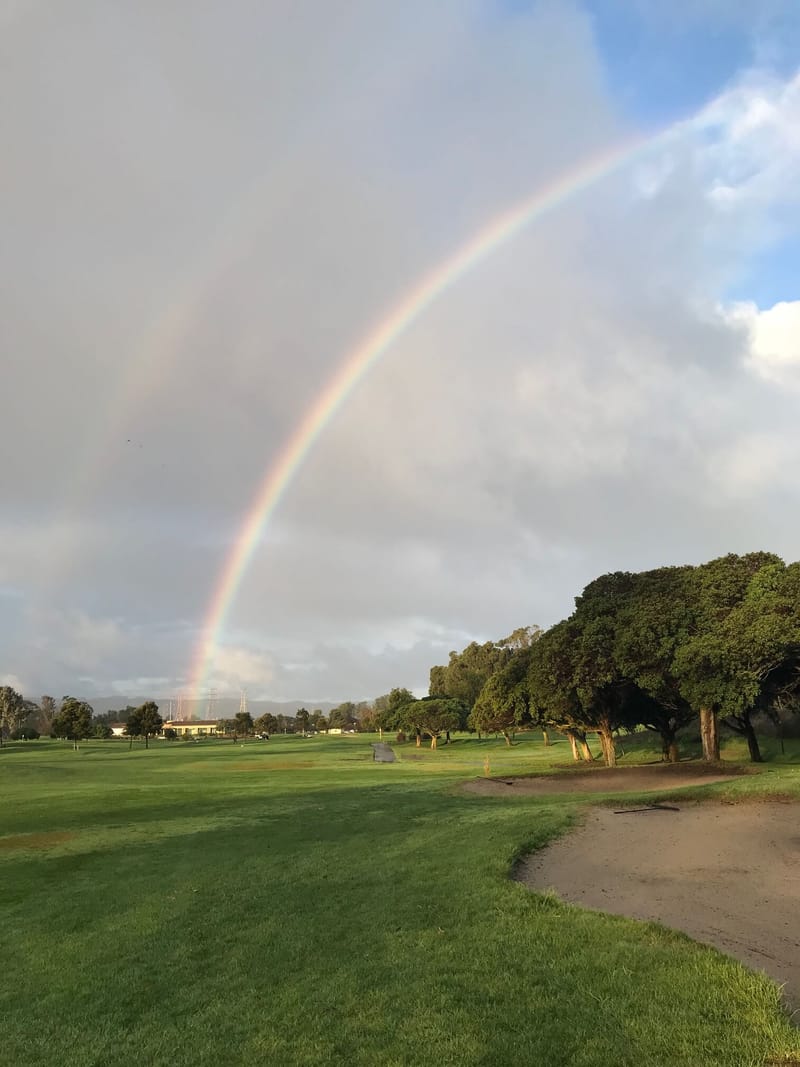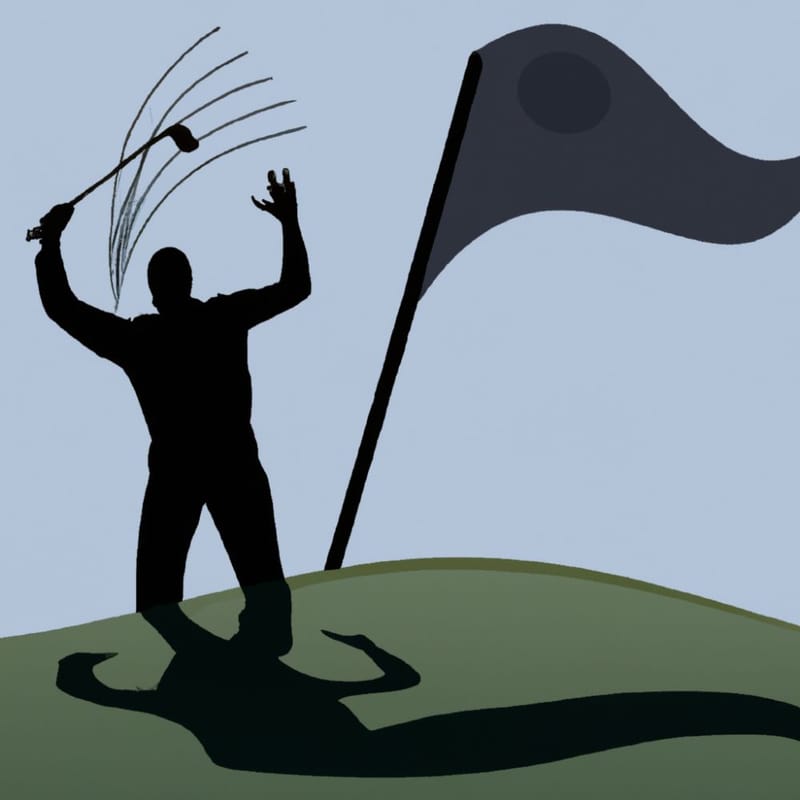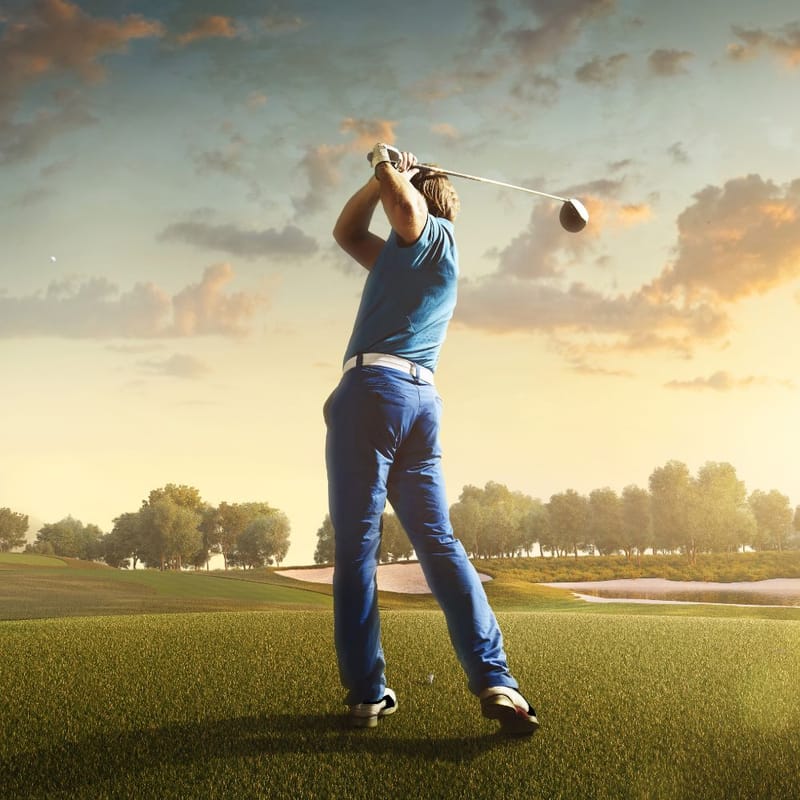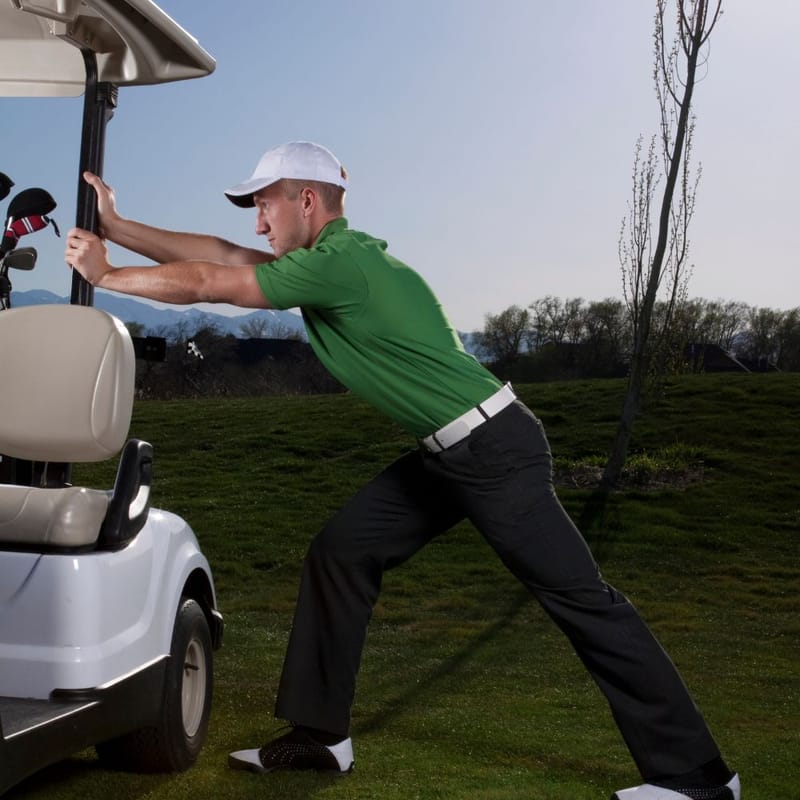Content Summary
Why Am I Topping the Golf Ball?
Topping the golf ball is a frustrating experience for golfers at all skill levels. It occurs when the clubhead strikes the top of the ball instead of making clean contact with the middle or bottom of the ball.
This results in the ball dribbling or rolling a short distance instead of achieving its intended trajectory and distance.
There are several reasons why you may be topping the golf ball. One common cause is a lack of proper posture and setup.
If you're not positioning yourself correctly over the ball, you may be inadvertently lifting your body during the swing, causing the clubhead to make contact with the top of the ball.
Another potential cause of topping the golf ball is improper ball position. If the ball is too far forward in your stance, you may be swinging down on the ball at the wrong angle, causing the clubhead to make contact with the top of the ball instead of the middle or bottom.
Tension and lack of confidence can also contribute to topping the ball. If you're feeling anxious or tense during your swing, you may be tightening up your muscles, causing your swing to be off balance and resulting in topping the ball.
Lastly, your swing mechanics may be contributing to topping the ball. Poor swing plane, clubhead swing path, overactive hands, and an incorrect release can all result in topping the ball.
To fix your topping issues, it's important to diagnose the root cause. Working with a golf coach or taking lessons can help you identify any swing flaws or issues with your posture, ball position, or mechanics.
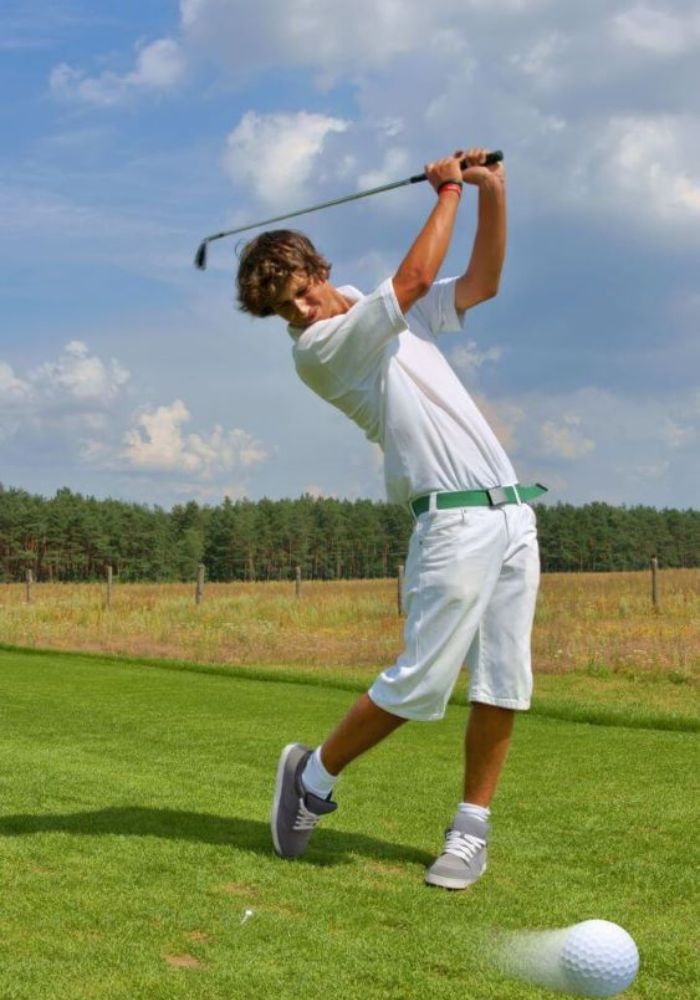
Additionally, practicing with drills and exercises to improve your swing plane and release can also help correct the problem. With the right adjustments and focused practice, you can eliminate topping the ball and enjoy more consistent and successful golf shots.
To correct the topping the ball problem, try this drill: Take your iron and draw a line in the ground about two inches behind the ball. Then, take your stance and make sure that your lead foot (that's the left foot for right handed golfers) is not on or over that line.
This will ensure that you are making contact with the ball first, which ensures you hit the ball correctly, and are not hitting the ground too early .
Remember to keep your spine angle relatively flat throughout the swing as well, and focus on hitting down on the ball to create a divot.
If you can do these things, it will help you start catching the ball more solidly and avoid those pesky fat shots!
How Do You Practice On The Golf Range?
Great golf shots come with proper practice. To practice on the golf range, you need to have a golf ball striking drills plan.
First, you need to know what your goals are. Are you trying to improve your game? Are you trying to work on your swing? Trying to develop good ball striking skills or are you just trying to have fun?
Once you know your goals, you can start practicing. If you're just trying to have fun, then hit some golf balls and see how they fly. If you're trying to improve your game, then start by working on your grip and stance to improve your iron shots.
Once you are comfortable hitting good iron shots you can move on to driver and woods. Take some time to experiment with different positions until you find one that feels comfortable.
If you're trying to work on your swing, then start by taking some practice swings. Pay attention to how your body feels and how the club moves through the air. Then, start hitting some balls.
Again, pay attention to how your body feels and how the ball flies. Try to make small adjustments until you find a swing that feels comfortable and produces the results you're looking for.
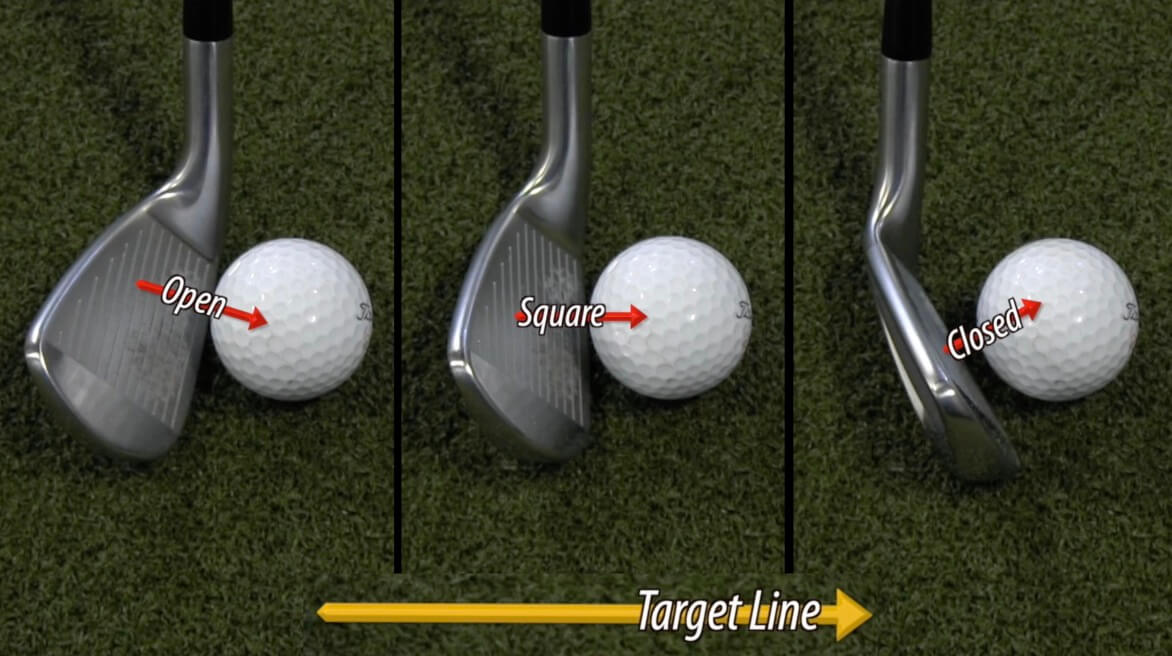
Here are some tips to use on the practice range:
Practice With a Direction Line
Practicing your golf swing is a crucial element to improving your game, but without focusing on accuracy, you may not see the results you're looking for.
When you hit balls on the range, it can be challenging to maintain a consistent level of concentration on each shot, especially when you're able to hit ball after ball without much consequence.
This can lead to a lack of appreciation for the importance of each shot, which ultimately detracts from the overall practice session.
One way to counter this issue and stay focused on accuracy is by incorporating an alignment stick into your routine.
By placing a straight line in front of you, you're able to visualize the exact direction your ball should travel, creating a target for each shot.
This tool can help you develop a sense of direction and improve your ball striking ability, making it easier to maintain accuracy on the course.
Accuracy is crucial when it comes to golf, and by practicing with a direction line, you can hone in on this important aspect of the game.
With improved accuracy, you'll be able to make better decisions on the course, reduce your number of mishits, and ultimately, lower your scores.
So, if you're looking to take your game to the next level, consider incorporating an alignment stick into your practice routine and start seeing the results in your overall game.
Practice With Both Short and Long Irons
Players, especially amateur's, tend to get nervous when picking up a longer iron so they feel like they have to swing harder to get the clubhead to the ball and lift it up into the air.
A great way to fight that feeling is to use a short iron for a few swings then a long iron. Keeping in mind that when you swing the long iron you swing it the same way you just swung the short iron.
With practice you will learn to trust your swing with either club and know the club does the work for you.
What Ball Position Is Correct?
Where the ball is in your stance matters. For longer irons the ball is more left in your stance, for a right hand player. The shorter irons are usually closer to the middle of your stance.
You'll need to move the ball around a fraction as you practice to see where the best contact comes from. I've noticed with some of my playing partners that the ball moves around quite a bit in their stance and they are not consistent with ball placement.
How To Stand To Hit a Golf Ball
Without the proper stance you are already failing rule number one - Proper Stance Position. It's important that a player has the proper stance for the shot they are about to execute.
Basically there are three stances that will help you play a better game. They are the the driver stance, the iron stance, and the wedge stance. The putting stance is a different subject we can cover in another article.
The 3 Golf Stance Types
The stances are similar but with variations. Once you have practiced the stances enough your body will start to automatically adjust when you address the ball.
The Basics of a Driver Stance
- Feet should be slightly outside of shoulder width apart
- Ball position is opposite the left heal
- The left toe for a right hand golfer will be flared a bit toward the target line
- Weight is balanced on the balls of your feet
The Iron Stance is a Fundamental Part of all Golf Shots
- Shoulder width apart
- Ball should be in the center or for some players just left of center
- Weight is balanced on the balls of the feet
The Wedge Stance
The narrowest of all the stances. It is used on shorter shots when approaching the green. This stance works with pitching gap, sand wedge and lob wedge.
- Feet just inside shoulder width
- Ball in middle of stance or slightly just back for some
- These irons have some amount of bounce so remember not to dig the leading edge
How Do You Hit the Golf Ball First, Then Ground?
In order to hit the golf ball first, then ground, you need to ensure that your club path is square to your target and that your angle of attack is steep enough. You also need to make sure that your golf ball is in the proper position for the iron you are using.
If you thin the shot, you will likely catch the ball too early and hit it fat. If you hit the ball too low on the clubface, you will likely take a divot before hitting the ball.
To drill this, set up a tee so that it is just higher than the ground. Take your iron and aim at the tee, making sure to take a divot. You should catch the ball before the clubhead reaches the ground.
How to Strike a Golf Ball
There is no better feeling out on the golf course than when you hit a crisp golf shot. To strike a golf ball properly, a golfer must first understand some basic principles of the golf swing. They must know how to grip the golf club, how to stand and how to position the golf ball.
They must also have a smooth, controlled backswing and downswing. At impact, the golf club should have some forward shaft lean and the club face should be square to the ball and the golfer's weight should be shifted to their front foot with their head position behind the ball.
If these things are done correctly, the golf ball will be hit in the center of the clubface and will travel on a straight path. However, if any of these things are done incorrectly, the ball will veer off course and the shot will be less than perfect.
Ramp Up Your Club Head Speed
As a general rule, tour players have club head speeds that are about 10% faster than the average player. If you want to help improve your club head speed, focus on improving your swing mechanics to strike the ball .
One of the best ways to do this is to take golf lessons from a certified professional. They will be able to help you identify and correct any flaws in your swing. Another way to increase your club head speed is to practice with iron clubs.
These clubs are designed to help players generate more speed and power. So, if you can swing an iron properly, you will likely see an improvement in your overall club head speed and be hitting shots farther down the fairway.
Note: *All products featured on GolfOften.com are researched and selected by our editors. However, when you buy something through us, we may receive a small commission at no additional cost to you.*
